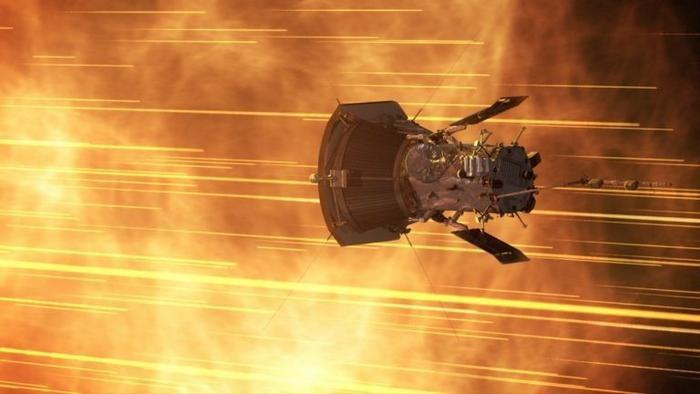NASA’s Parker Solar Probe yesterday made a flyby of Venus as part of its mission to study the sun from closer than any other spacecraft.
It was the sixth and penultimate time the car-sized spacecraft required a gravity assist from the second planet in order to tighten its orbit around the sun. During the flyby its took measurements of the atmosphere and surface of Venus.
The flyby will help Parker break its own record for speed and solar distance when, on Sept. 27, 2023, it will travel at a whopping 394,742 miles per hour as it comes to 4.5 million miles from the surface of the sun.
Earth is about 93 million miles from the sun.
Parker’s flyby was achieved by a firing of its thrusters for 4.5 seconds on Aug. 10, which adjusted its trajectory by 77 miles and sped it up by 1.4 seconds.
“Parker’s velocity is about 8.7 miles per second, so in terms of changing the spacecraft’s speed and direction, this trajectory correction maneuver may seem insignificant,” said Yanping Guo, mission design and navigation manager at APL. “However, the maneuver is critical to get us the desired gravity assist at Venus, which will significantly change Parker’s speed and distance to the sun”.
Although the Sept. 27, 2023 flyby of the sun will be close, the nearest Parker will get to our star comes in December 2024 when it will reach just 3.8 million while traveling at 430,000 miles per hour.
On June 27 the probe got to within just 5.3 million miles of the solar surface while traveling at 364,600 miles per hour.
About the size of a small car, Parker’s mission is to collect data to help solar physicists unlock the secrets of the solar wind, a continuous flow of high-energy particles that permeates the entire solar system.
With more data it’s hoped that solar physicists will be able to better understand heliophysics and so more accurately predict space weather, which cause aurora but also radio blackouts, satellite damage and even problems with the internet.
Earlier this month the spacecraft celebrated five years in space. It was launched on Aug. 12, 2018 atop a Delta IV rocket from Cape Canaveral Space Force Station.
Wishing you clear skies and wide eyes.
Read the full article here










